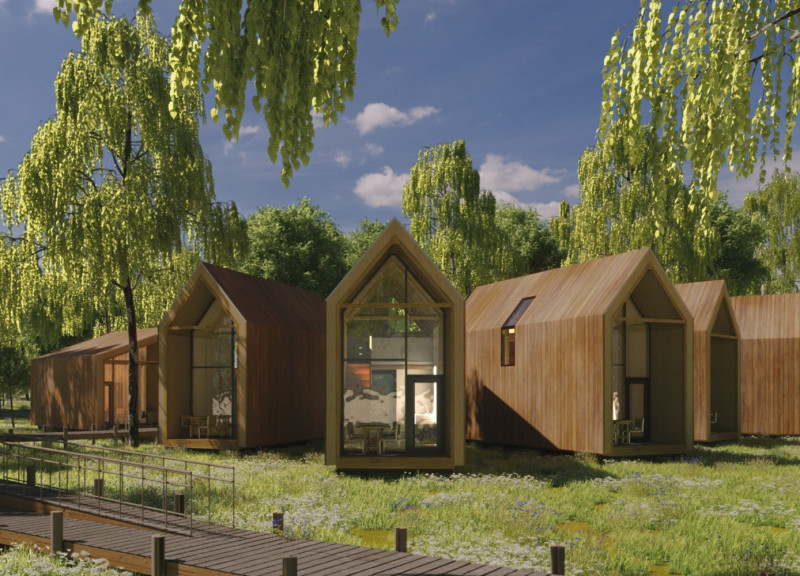5 key facts about this project
The Caramel House project encapsulates the spirit of Latvian culture and its stunning natural backdrop. Located beside a peaceful river, five individual cabins are arranged to provide guests with unobstructed views of the landscape. Each cabin is designed to accommodate 2-4 people, featuring essential amenities such as a mini kitchen and a mezzanine level. This layout enhances both comfort and functionality, allowing guests to feel connected to the surroundings.
Design Concept and Layout
The design focuses on creating a balance between indoor and outdoor living, encouraging guests to engage with nature. The entrance leads into a common area where visitors find a wardrobe and storage for luggage, followed by a bathroom equipped with a shower. A kitchen area supports shared meals and gatherings, and private terraces extend the living space outdoors. Mezzanine levels offer additional sleeping arrangements, maximizing the space while maintaining a sense of privacy.
Accessibility and Spatial Efficiency
Accessibility is a key aspect of the design, with careful consideration given to people with disabilities. Pathways are designed with ramps for easier movement. Sleeping areas on the ground floor help accommodate various needs, reflecting a commitment to inclusive design.
Material Selection and Sustainability
Sustainability is central to the building's materials. The cabins make use of locally sourced wood, which reflects the region's architectural heritage. A wooden frame with a metal pile foundation minimizes disturbance to the natural terrain. Durable materials are chosen to ensure the longevity of the structure, promoting environmental responsibility throughout the design.
Cultural Integration and Landscaping
Cultural references play an important role in the overall design. The landscaping integrates local symbols such as linden trees, field daisies, and cornflowers, enhancing the visual identity and connection to Latvia. Including a sauna within the project highlights traditional practices, reinforcing the relationship between modern living and cultural heritage.
Large windows fill the cabins with natural light, creating a warm atmosphere while framing views of the river. This design choice fosters a strong connection between the interior spaces and the natural landscape, inviting the elements of nature inside.






















































